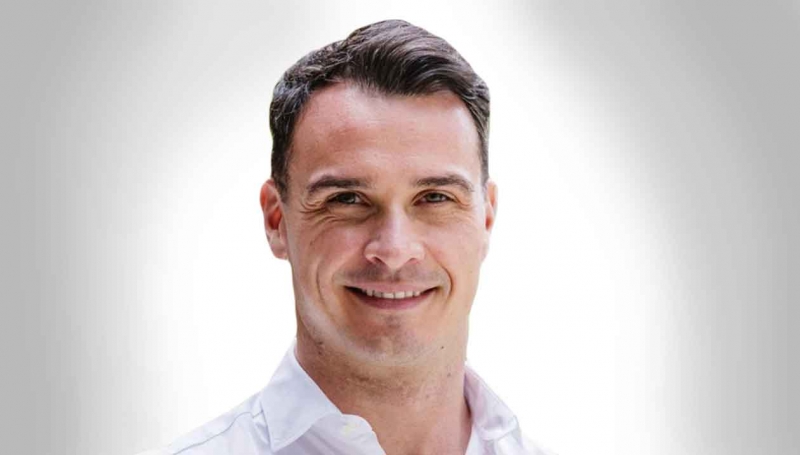Advertisers are reassessing the value of social media and their reliance on it. The spread of misinformation has grown to a serious concern, prompting them to seek out alternatives that could offer both rich mobile data as well as scale. Carousell, the Singapore-based online marketplace for secondhand goods, thinks it can fill the void. The newly formed Carousell Media Group is combining its different platforms, and the first-party data contained therein, managing director JJ Eastwood told KrASIA in a recent interview. The firm is so able to resolve concerns with a “one-stop ad solution.”
“The secondhand nature of marketplaces was once a deterrent to advertisers but that has changed a lot,” said Eastwood. “They understand that the buying and selling nature within marketplaces provide really unique insights into passionate communities.” Using the example of the Sneakerhead subculture, he explains that nobody would have known of such a community if it wasn’t for passionate active sellers and buyers on secondhand shopping sites.
The Carousell Media Group was launched last month as a marketing platform for the brands Carousell, Mudah.my, Cho Tot, and OneKyat. It is currently managing the firm’s advertising in the existing markets in Hong Kong, Indonesia, Malaysia, Myanmar, Philippines, Singapore, Taiwan, and Vietnam. Carousell last year welcomed with Korean tech giant Naver a new investor that pushed the firm close to unicorn valuation.
The company previously sold its ads on the Singapore Media Exchange, a programmatic advertising platform run by Singapore Press Holdings and Mediacorp. Parallel to that, Carousell already began working on a platform of its own by developing proprietary technology that analyzes user search history and purchase intent, combining it with third-party adtech technology such as Google Ads Server.
Certainly, Carousell is uniquely positioned as a “publisher.” 70% of its visitors are millennials, a highly sought-after consumer segment. Armed with a valuable bank of data points on their purchase motivations and behavior, it is offering advertisers “precision targeting.” From real-time cues such as keywords searches, category browses, location, and even the type of mobile carrier users are on, the Media Group claims it is able to customize campaigns accordingly.
Eastwood explains that Carousell isn’t looking at millennials as a monolithic group. Bringing its programmatic functions in-house not only gave them greater control over the inventory but they now also have the flexibility to append layers upon layers of first-party data to create unique millennial personas such as the environmentally-conscious, motorheads, Hallyu fans, or even otakus.
The adtech veteran, with previous stints at eBay, Rakuten, and HuffPost Australia, mentions the example of an FMCG brand that wants to break down the young parents group into three separate cohorts: pregnant right through to nine months, nine months to toddler, and toddler to early teens. “We are able to identify these segments via buying and selling patterns such as the purchase of prenatal books or cots,” he said. “We are also able to pick up signals that are not as intuitive, such as users looking to purchase a bigger car to create these robust segments.”
However, running a shopping site can be both a boon and a bane. While one is able to connect to passionate and like-minded communities, there will also be bad actors. Carousell itself has had to manage unhappy customers and negative reputation over the years. There are dedicated Tumblr websites, Reddit threads, Instagram, and Twitter accounts that earned the company the unfortunate nickname of ‘Carouhell.’
Tackling fraudsters
Fraudulent users in particular continue to plague the platform. Some of them went rampant as online shopping picked up on the top of the pandemic last year. Scammers were putting up listings of items in high demand, such as masks or hand sanitizers, with no intention to fulfil the orders. Carousell compared combating fraud to “an arms race” and had to invest resources to keep cheaters at bay. The firm doubled the size of its content moderating team, which is processing most of the reports on inappropriate and suspicious content in less than an hour.
Additionally, it deployed a mix of artificial intelligence and digital fingerprinting technology to prevent bad actors from returning. Over 50,000 accounts have been deactivated over the past year. As an ad-dependent platform, these steps are necessary to protect its revenue while remaining free for its users.
According to Eastwood, advertising makes up 25% to 30% of revenue for many shopping platforms around the world. However, he thinks that their ad business functions more traditionally and they tend to be happy working in silos. This is unlike Carousell which has significantly invested in its data platform over the past 12 months.
“Carousell Media Group is a core part of Carousell’s business,” he said. “If you think about it, marketplaces are fundamentally advertising platforms, connecting buyers and sellers. We are just adding brands into the equation.” And then sets the objective right. “With our consolidated regional approach, we have greater ambitions than 25% to 30% of the overall revenue.”
